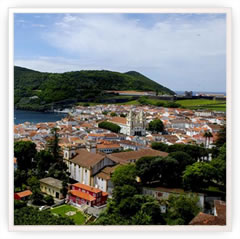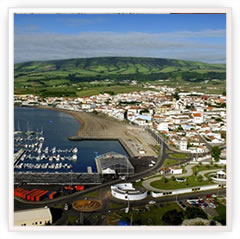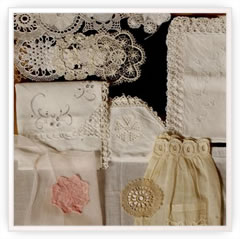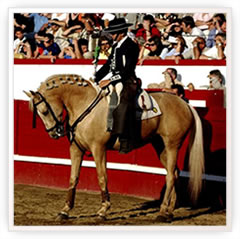Terceira Island




HISTORY
This island was named “Ilha de Jesus Cristo” by the Portuguese seamen during its recognition period. The settlement begins in 1450, with the concession by Infante D. Henrique of a captaincy to the Flemish Jácome de Bruges. The first settlements are located in the areas of Porto Judeu and Praia da Vitória and without delay extended themselves to the rest of the island.
Initially, with an economy based in the agricultural production, mainly of cereals, the export of woad, a dye plant, Terceira begins to have an important role in the navigation of the 15th and 16th centuries as port of call for the vessels that brought treasures from America and for the galleons from India.
In this period Terceira is a “warehouse” for gold, silver, diamonds and spices from other continents that attract French, English and Flemish privateers to attack Terceira’s coasts during several centuries.
The throne succession of the Spanish King Filipe II, in 1580, and the side of D. António, Prior do Crato, who lived in Terceira and coined money, taken by Terceira inhabitants, was the main cause of attempts of conquest by the Spanish. The first disembark of Spanish troops takes place in 1581 and the Spanish are totally defeated in the Salga Battle, in which participated the writers Cervantes and Lope de Vega. In 1583, Spanish forces that were much more superior than the local ones, and commanded by D. Álvaro de Bazan, winner of the Lepanto Battle, were able to dominate the island after violent combats.
Until 1460 Terceira is a port of call for the Spanish galleons that bring great treasures from Peru and Mexico. With the Restauration, the Spanish are expelled from the island and life goes back to normal. The island remains with its position as an economical, administrative and religious centre of the Azores until the beginning of the 19th Century.
The Liberal Wars allowed Terceira to have once more an important role in Portugal’s History. Supporter of the Liberal Party since 1820 and after several ups and downs, there is a turn in 1828, in which the Absolutists are dominated and Terceira is transformed in the main base for the liberals. In front of the village of Praia takes place in 1829 a violent naval battle, in which the “Miguelistas” forces are defeated. Afterwards, follows the installation of the regency on the island and posterior conquest of the other islands of the archipelago for the Liberal cause. From Terceira’s departs to the Mainland, in 1832, the fleet and the army and, after disembarking in Mindelo, proclaim the Constitutitional Charter.
The end of the 19th Century and beginning of the 20th century are characterized by a progressive reduction of Terceira’s importance in the Archipelago. The construction of the port at Praia da Vitória, the important air base, the commercial port open new perspectives of development on the island.
GEOGRAPHY
The island has an elliptic form, with a surface of 381,96km2, with a length of 29 km and a maximal width of 17,5 km.
A plain, with the soft prominence of Serra do Cume, dominates the most western point of the island. The central zone is marked by the great and low crater of Guilherme Moniz caldera and by numerous craters with small lakes. On the eastern side raises a volcanic cone with a huge caldera, Serra de Santa Bárbara, with a maximal altitude of 1023m. It is located at 27º
GASTRONOMY
Fish stew (“Alcatra”)
Meet stew (“Alcatra”)
Holy Spirit Soup
Convent type desserts
Cheese
Wine
FESTIVITIES
HOLY SPIRIT FESTIVITIES
These festivities are common to all the islands, although different in some details from island to island and even from parish to parish. All the parishes around the island have a chapel named “império” with a brotherhood. These religious festivities are considered the most characteristic of all the island’s ethnology.
Location: All islands
Dates: From May to September, with special emphasis on the 7th Sunday after Easter
Entity: Holy Spirit Brotherhoods
“S.JOÃO” FESTIVITIES
S. João is one of the patron saint with more devotees and for this reason the 24th of June is totally dedicated to him. The origin of these festivities goes back to the settling of Terceira with noblemen. As S. João is the patron saint of the Portuguese noblemen. The noblemen that lived on the island built a chapel in order to celebrate their saint.
Location: Terceira, Flores and Faial
Date: 24th June
Entity: Festivities’ Comission
PRAIA’S FESTIVITIES
This festivity celebrates the turning of Praia da Vitória village into town. The main points are the gastronomic fair with the presence of different regions from Spain, bullfights, exhibitions and concerts. The programme also includes sport activities related with the sea.
Location: Praia da Vitória
Date: 4th to 10th August
Entity: Festivities’ Comission
BULLFIGHTING
The tradition of Terceira’s bullfights goes back to the 16th century, either due to the abundance of cattle (more than 100.000 cattle) and to the origin of the first settlers that came from regions with bullfighting tradition and later also due to the influence of the Spanish presence. It is a happy, and full of movement show, in which the bull is controlled by a group of men with a rope.
Location: Terceira
Date: May to October a Outubro
Entity: Festivities’ Comission
“SANJOANINAS” FESTIVITIES
These festivities are related to St John and became, throughout the years, bullfight festivals with animated rope bullfights, bull runs and ring bullfights, always with the presence of riding or on foot bullfighters. Also part of the festivities programme are the decorated cars and ethnographic parades and the performance of popular marches. There are also sport activities in different modalities. At night we have the performance of music groups of different types. It is also an opportunity to taste the traditional snacks of the island, in the typical “tascas” that also characterize this festivity.
Location: Angra do Heroísmo
Date: 16th to 25th June
Entity: Festivities’ Comission
TERCEIRA ISLAND’S CARNIVAL DANCES
The Carnival dances – “Danças de Entrudo” – name given by the islanders to their most important and most well-known form of popular theatre. These dances take place during Carnival. Thousands of locals and visitors follow the dances around the island, whose themes are related to everyday life. Parade, street or square theatre, the dances are formed by two lines of eight dancers and a master (with a sword, a frame drum or a whistle) and a variable number of characters, together with a group of musicians. People find on these dances the magic necessary to tell the stories of the past, to tell what they suffer in the present and to tell what they demand for the future.
Location: Terceira
Date: Carnival
Entity: Festivities’ Comission
ANGRAJAZZ FESTIVAL
For further information, please visit the festival’s official website: www.angrajazz.com
ANGRAROCK FESTIVAL
For further information, please visit the festival’s official website: www.angrarock.com
PLACES TO VISIT
ANGRA DO HEROÍSMO’S HISTORICAL CENTRE
In 1983, Angra do Heroísmo, the main urban centre of Terceira, was classified as World Heritage by UNESCO. We suggest a walk in the historical centre.
PRAIA DA VITÓRIA’S MAIN CHURCH
From the religious architecture stands out the Main Church with ogival porches and “manueline” chapels. From the civil architecture stands out the Town Hall, whose building is dated from the 16th century. We suggest a walk in this area.
“ALGAR DO CARVÃO” (cave)
Located in the interior of the island, “Caldeira Guilherme Moniz” is a volcanic chimney, that was not completely filled with lava. In its interior the walls and the vault are covered with silica stalactites and on the floor there are stalagmites
CHURCH OF “S. SEBASTIÃO”
Church with gothic portals and in its interior a big fresco, constituted by five panels representing St. Martin, Saint Barbara, apparition of Jesus to Magdalena, St Sebastian, St. Joachim and Saint Anne.
“BISCOITOS”
It is an important wine zone that produces the famous “Biscoito’s Verdelho”. We suggest a visit to the Wine Museum, the bathing zone with natural swimming pools, where the black of the lava and the blue of the see stand out.
